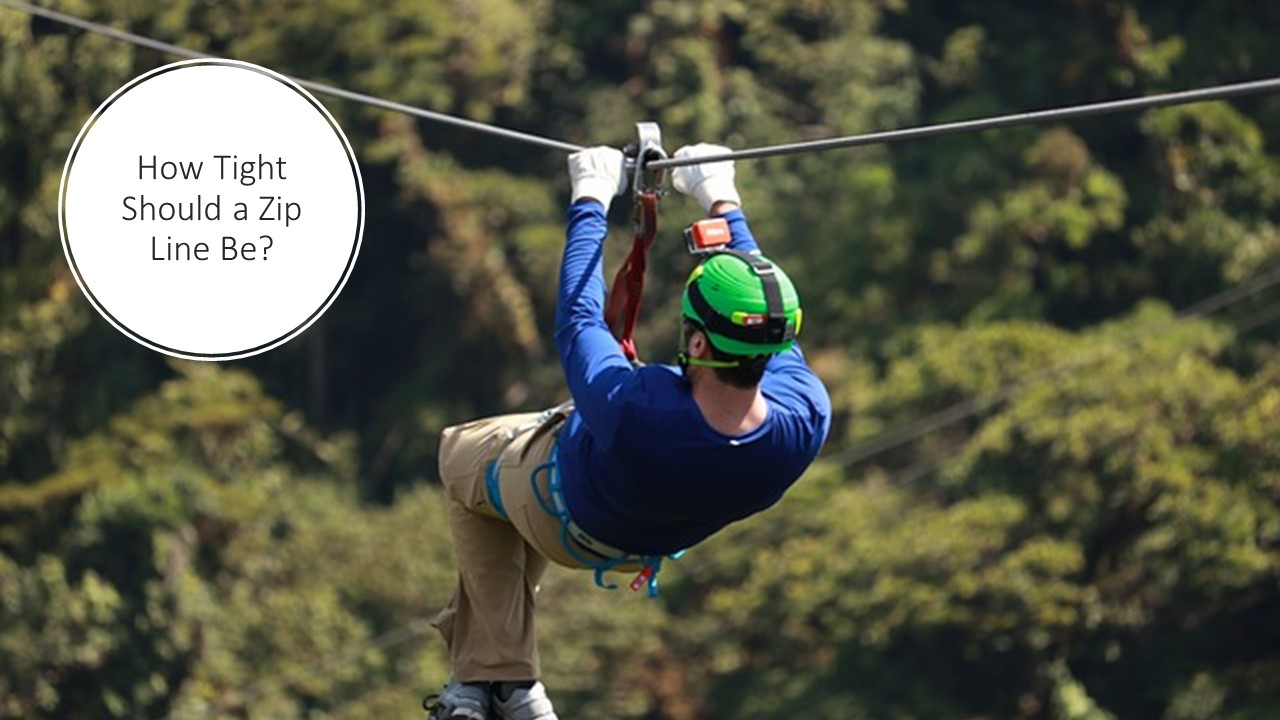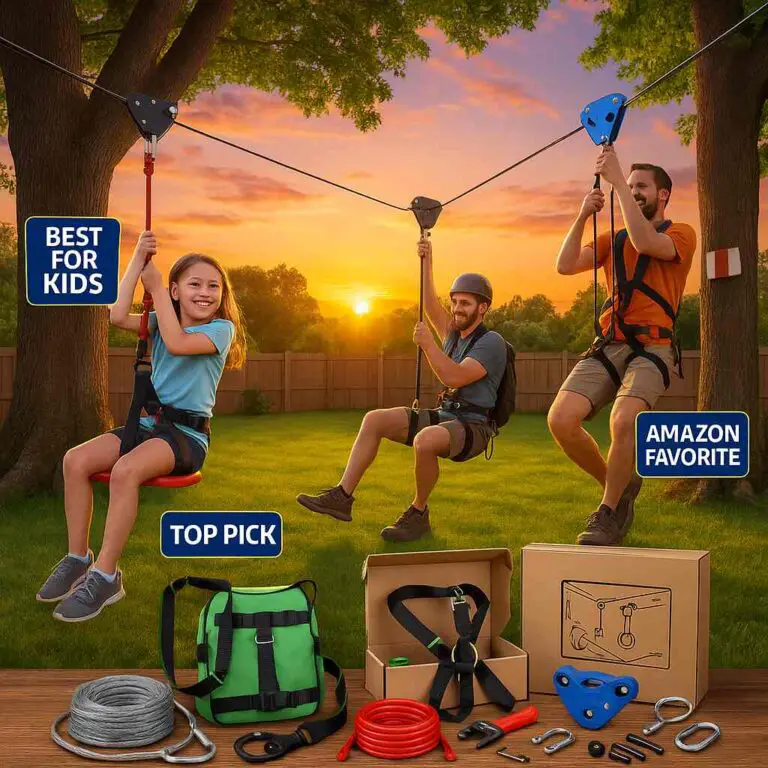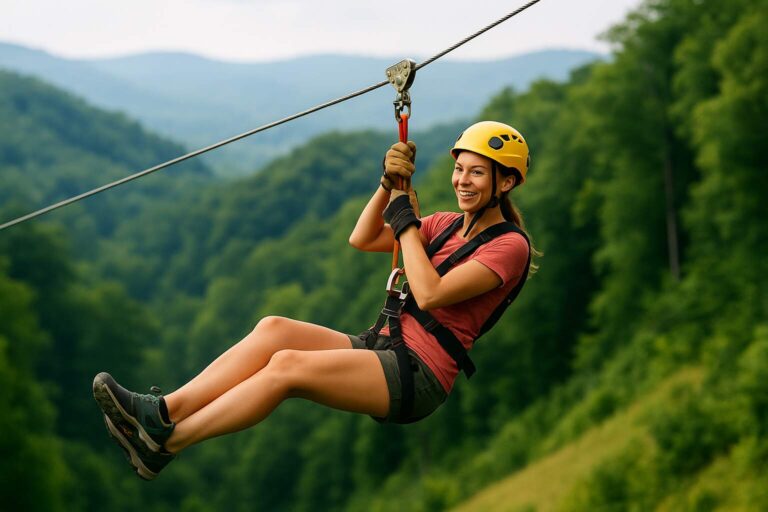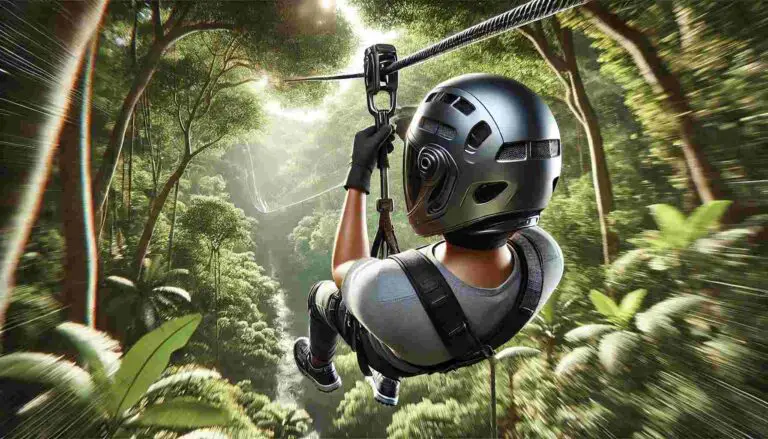Zip line adventures have become increasingly popular in recent years as an exciting and unique way to experience the outdoors. These thrilling rides allow riders to soar through the air at high speeds while suspended from a cable, offering an unforgettable adrenaline rush. However, as with any adventure activity, safety is of the utmost importance. One crucial factor in ensuring a safe zip line experience is proper tension. It is very important to know how tight should a zip line be for a safe adventure.
Zip line tension should be tight enough to support the weight of the rider without sagging too much, while also considering factors such as the length and slope of the line, the type and size of the cable, and environmental conditions.
In this article, I will explore how tight a zip line should be and why it matters. Whether you’re a seasoned zip liner or a first-time rider, understanding the importance of proper zip line tension can help ensure a fun and safe adventure.
Factors to Consider When Determining Zip Line Tension
When determining the tension of a zip line, there are several factors that need to be taken into consideration to ensure that it is safe and enjoyable for riders. These factors include:
- Weight and Size of the Rider. The weight and size of the rider are crucial factors that need to be considered when determining the tension of a zip line. The cable needs to be tight enough to support the weight of the rider without sagging too much, which can cause the rider to hit the ground or other obstacles.
- Length and Slope of the Zip Line. The length and slope of the zip line also play a significant role in determining the appropriate tension. Longer and steeper zip lines require more tension to ensure that the rider can safely traverse the distance without losing momentum or becoming stuck midway.
- Type and Size of Cable. The type and size of the cable used for the zip line also impact the necessary tension. Different materials and thicknesses of a zipline cable have different strength and flexibility characteristics that affect how much tension is required to maintain proper support for riders.
- Environmental Factors. Environmental factors such as wind, temperature, and humidity can also impact the tension of a zip line. Changes in weather conditions can cause the cable to expand or contract, which may require adjustments to the tension to ensure rider safety.
Recommended Zip Line Tension Guidelines
Industry standards and recommendations provide guidelines for the appropriate tension levels for zip lines. Here are some recommended zip line tension guidelines to consider:
- Industry Standards and Recommendations. There are several organizations that provide guidelines for zip line installation and maintenance, including the Association for Challenge Course Technology (ACCT) and the Professional Ropes Course Association (PRCA). These organizations have established standards and best practices for the installation, maintenance, and operation of zip lines, including tension requirements.
- Common Zip Line Tension Ranges. Zip line tension can range from 5% to 15% of the cable’s breaking strength, depending on the specific factors involved, such as the weight of the rider, the length and slope of the line, and the type and size of the cable. In general, tension levels between 7% and 12% are considered appropriate for most zip line installations.
- Adjusting Tension for Optimal Performance and Safety. While there are general guidelines for zip line tension, each installation is unique, and adjustments may need to be made based on factors such as rider experience, environmental conditions, and equipment wear and tear. Regular inspections and adjustments by trained professionals are essential to ensure that zip line tension remains at safe and optimal levels.
Effects of Improper Zip Line Tension
Improper zip line tension can have serious consequences for rider safety and the overall enjoyment of the ride. Here are some of the effects of improper zip line tension:
- Too Loose. If a zip line is too loose, it can sag too much, leading to an increased risk of falls and injuries. Riders may also lose momentum and come to a stop midway, leading to frustration and decreased enjoyment of the ride.
- Too Tight. If a zip line is too tight, it can put excessive stress on the cable and other equipment, leading to increased wear and tear and potential failure. This can lead to a higher risk of injury for riders and may result in the need for costly repairs or replacement of equipment.
In addition to these safety concerns, improper tension can also impact the quality of the ride itself. A zip line that is too loose may be slow and lack the desired thrill factor, while a zip line that is too tight may be uncomfortable and jarring, reducing rider enjoyment.
Overall, proper zip line tension is critical to ensure rider safety and the optimal performance of the ride. Regular inspections and adjustments by trained professionals are essential to maintain appropriate tension levels and ensure a safe and enjoyable experience for all.
Proper Maintenance of Zip Line Tension
Proper maintenance of zip line tension is essential to ensure the safety and enjoyment of the ride. Here are some recommended maintenance practices:
- Regular Inspections. Zip line operators should conduct regular inspections of the cable, equipment, and surrounding area to identify any signs of wear and tear, damage, or other potential hazards. These inspections should be conducted by trained professionals and follow industry guidelines and best practices.
- Tension Adjustment. Zip line tension should be adjusted as needed based on factors such as rider weight, weather conditions, and equipment wear and tear. Tension adjustments should only be made by trained professionals using appropriate equipment and techniques.
- Replacement of Worn or Damaged Equipment. If any equipment is found to be worn or damaged during inspections, it should be replaced immediately to ensure the safety of riders. This includes cables, pulleys, harnesses, and other components of the zip line system.
Regular inspections and adjustments can help identify and address potential issues before they become hazards, and prompt equipment replacement can prevent accidents and ensure optimal performance.
Conclusion
In conclusion, understanding how tight a zip line should be is crucial for ensuring the safety and enjoyment of this exciting adventure activity. Proper tension is impacted by factors such as rider weight, length and slope of the line, type, and size of the cable, and environmental conditions. Industry standards and guidelines provide recommended tension ranges, but adjustments may be needed for each unique installation. Improper tension can have serious safety consequences and impact the quality of the ride.
Proper maintenance practices, including regular inspections, tension adjustments, and equipment replacement, are essential for maintaining safe and optimal zip line tension levels. Overall, a commitment to safety and regular maintenance can help ensure a fun and memorable zip line adventure for all riders.








